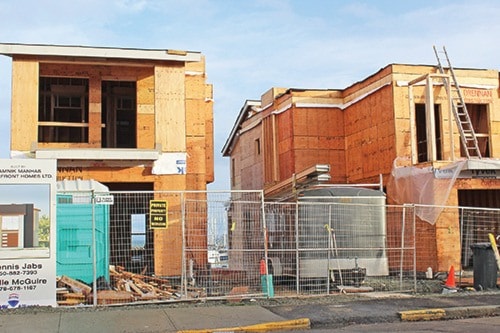Central Saanich resident Alex Apouchtine had a lot to say when it comes to affordable housing.
At the Nov. 30 Central Saanich town hall meeting, Apouchtine brought forth his concerns, stating that as an observer of the last official community plan (OCP) and all of the discussions about densification in the District, he had quite a few concerns — along with possible resolutions.
He said that when he and his wife were looking for their first home, they had very little money and bought what he called a ‘derelict’ house, one that had been rented for many years.
“We probably paid almost nothing for the house,” he said. “We paid for the land but as two young kids ... we had the stamina and the effort and I happened to have some technical skills.”
Rebuilding the house from the ground up, Apouchtine said those were the kind of houses available back then that one could buy.
Fast forward to when he moved into Brentwood Bay and was looking for a house for his daughter. He said he still came across those kinds of houses.
“But what I noticed is that many of those houses ... which were in very bad shape, had been bought by young couples, had been refurbished and in fact they’re still standing. The house that I fixed up, it’s still standing and I bought that in the ‘70s.”
What’s happening now ever since densification has come in, he said, is if a house like that goes on the market, it’s gone. Developers destroy it and replace it with more than one home.
“There’s three houses where one house used to be, it’s substantially more expensive than the one house that used to stand there,” he said, adding he thinks those original homes were perfectly fine — as long as people are willing to work.
His answer to keeping older, more affordable houses standing? Issuing destruction permits.
“So you have two choices as a developer. You can destroy the house but you’ve got to have a permit and you pay a fine or a fee for (being allowed) to destroy the house. Or you can deconstruct the house. And if you (do) you don’t pay for the permit, it’s free.”
He added this offers an incentive to the developer in minimizing the large amount of waste entering the landfill.
Councillor Alicia Cormier said she wasn’t aware of a deconstruction permit or incentives and would like to look into it. Cormier said she bought her first home in 1982 and said two of the homes near it are on the market.
“There’s the argument for ‘that’s progress’ and you know it’s a desirable area and lots of people want to move here,” she said. “There’s also the understanding … somebody said to me it’s like ... our local government’s ability to rezone is like printing money and so I’ve been a real strong advocate, particularly with multi-family developments where there’s a huge uplift in the value of a property when you can turn it into one to three or six to 24 …”
Coun. Bob Thompson raised a motion not long ago that looked at reviewing densification in the District — not so much in terms of policy but more about coming up with better ideas for neighbourhood fit.
Cormier said the community is losing those old homes throughout the Peninsula and said we have to ask, how much is enough when it comes to densification.
“I think in the discussion that we have around densification; what does it look like, where is it and how much is enough? Because what I’m concerned about is we want this to be a well operating community but we also want it to be accessible, affordable and environmentally attractive … so I really look forward as we go forward talking about our regional sustainability plan or regional growth strategy, whatever you want to call it and our discussion around densification,” she said.
Apouchtine said there is another solution to densification being ignored in the area: multigenerational housing.
“The key element in the multigenerational unit is that there are common elements and private elements,” he said.
The suite bylaw that exists in Central Saanich he said, forces owners to have a completely separate private unit and that’s not conducive to a multigenerational family.
And so having that private space is important, he said, adding with multigenerational housing involved many things, from built-in babysitting to keeping family in the area. That, in turn, goes back to affordable housing for the younger population, he said, some of whom may want to live where their parents live but simply can’t afford it.
